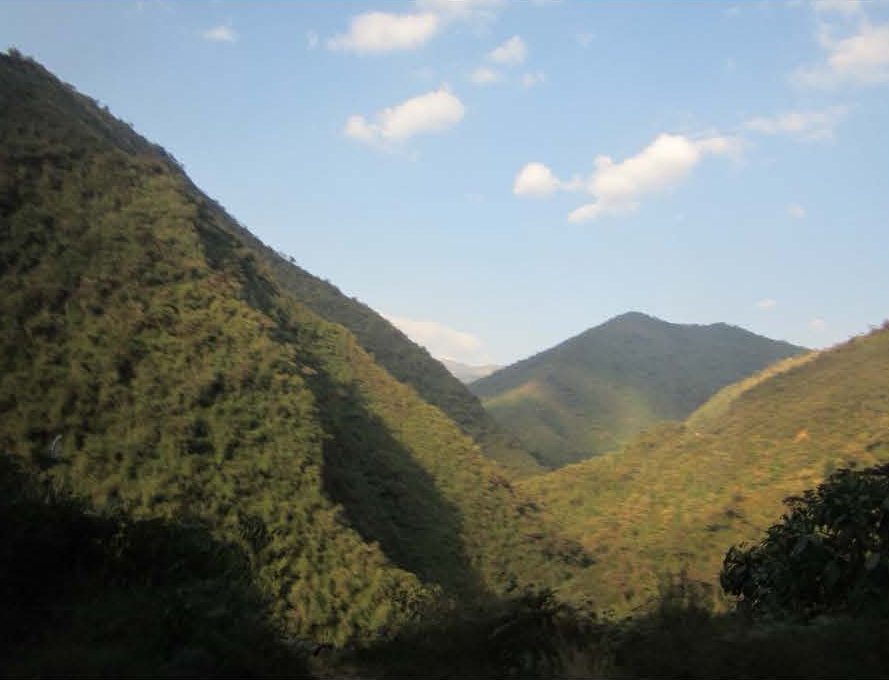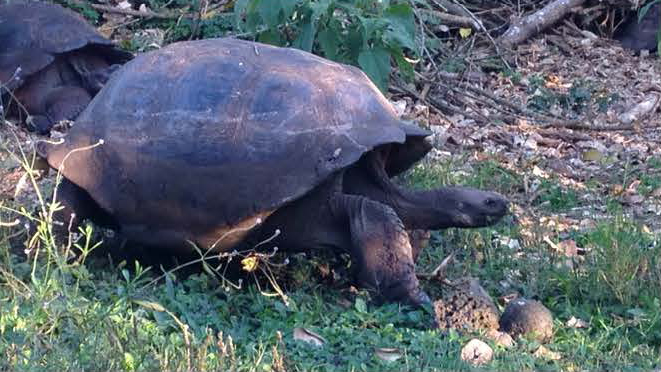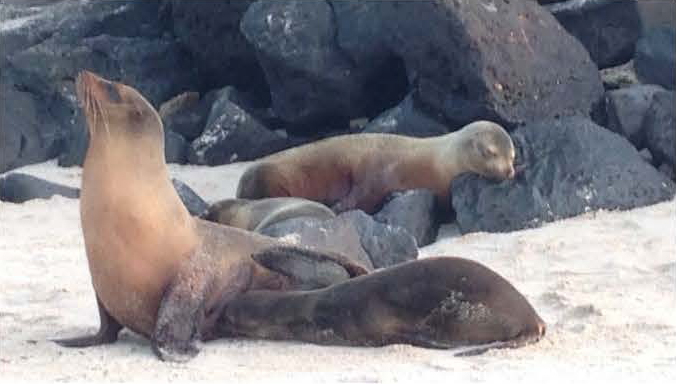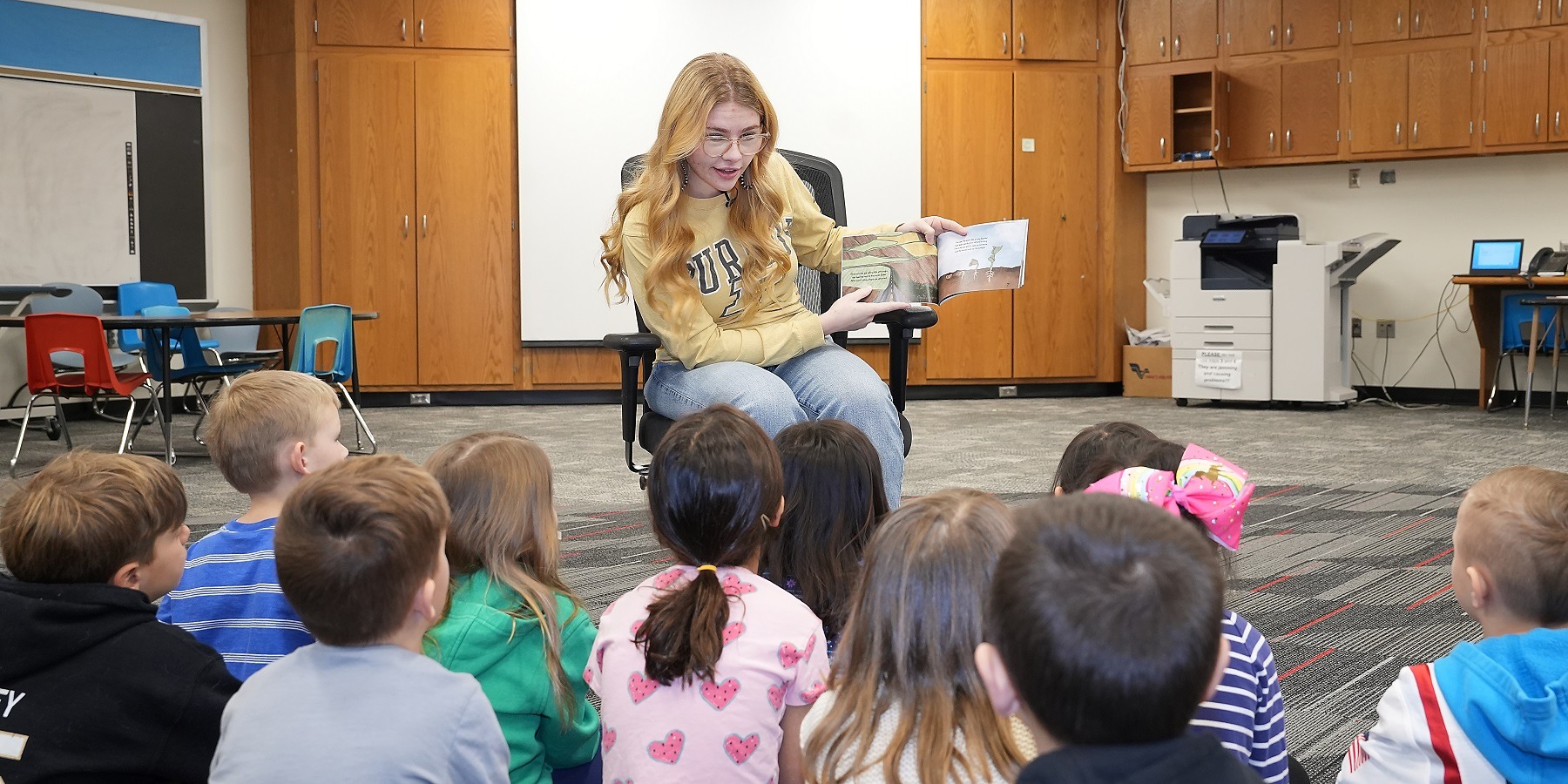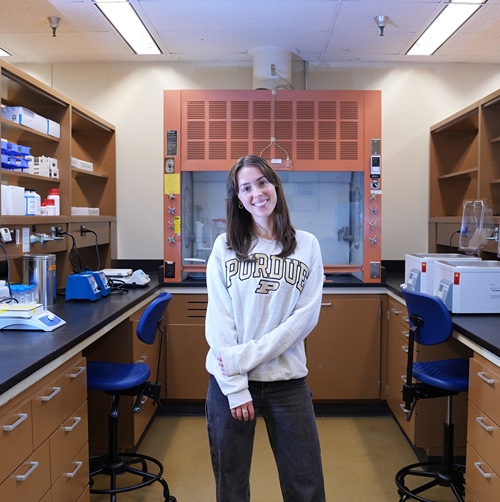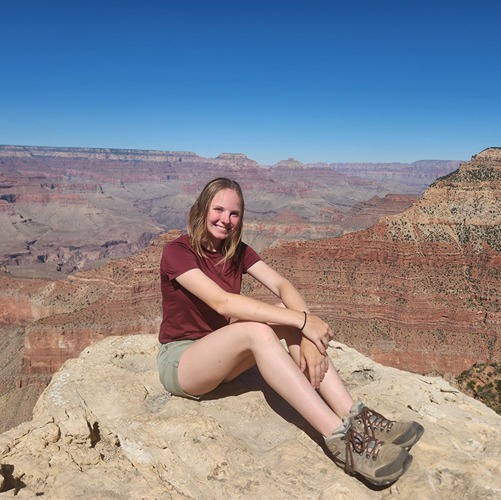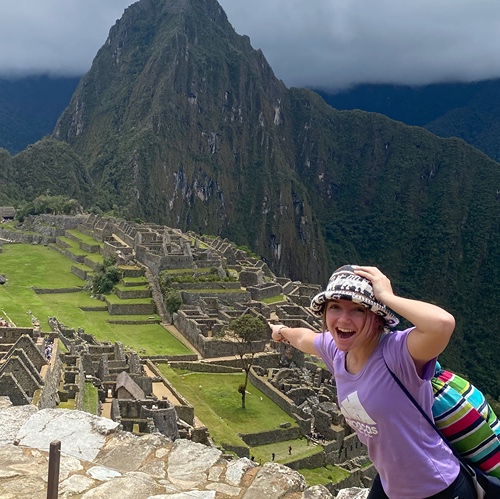In August, a little less than two weeks before the start of fall classes, a group of Purdue students and professors took off from the Indianapolis airport and started what would be a memorable study abroad trip to Ecuador and the Galapagos. I was among one of the lucky students in the group and can confirm that everyone was excited for the coming adventure.
The first day, we reached Quito, Ecuador after sunset. We met our friendly tour director, Ivan, for the first time, and headed to the hotel ready for a good night’s sleep for sightseeing in Quito the next day. Before we knew it, it was time to wake up and head out to the city of Quito. It would have been an understatement to say that the Quito street traffic was hectic. With cars honking 10 inches away from each other and motorcyclists turning two-lane roads into three-lane roads, our bus driver somehow managed to get to every destination without a hiccup. Beyond the seas of houses and buildings, a beautiful mountain-sculpted skyline jutted up into the blue sky. We visited some beautiful places in Quito, from a towering statue of St. Mary to the Church of San Francisco. Some surprises presented themselves along the way, including dogs roaming free in the city and fifty-cent port-a-potties. At the day’s end, the beauty within Quito and Ecuador’s culture was quite clear to all in our group.
The next day, it was time to fly to the Galapagos Islands. Excitement built up within the group, as no one had ever been to the Galapagos before. Landing on Baltra, one of the many islands in the Galapagos, was hard to believe for many of us, and a beautifully barren landscape, brisk wind, and Galapagos Dove greeted us as we stepped off the plane. At the airport, we met our tour guides, Alfredo and Domenica, who would guide us through the Galapagos Islands. Once we got through the airport, it was off to the bus to catch a five-minute boat ride to Santa Cruz. On the bus ride, our first and only wild land iguana was spotted making his way across the barren Baltra terrain. Once on the five-minute boat ride, frigatebirds were soaring above us and
blue-footed boobies were plunge-diving like missiles all around. The wildlife of the Galapagos was already like nothing seen before!
Having arrived on Santa Cruz, we rode a bus to El Chato Tortoise Ranch and were lucky enough to spot several wild Galapagos giant tortoises along the way. Little did we know that we would see many more roaming around the El Chato Tortoise Ranch! If seeing a Galapagos giant tortoise in the wild was on the bucket list for ay in our group, it is safe to say they have that one checked off now!
After a day on Santa Cruz, a two-hour boat ride across the ocean led us to the Galapagos island of Isabela. There, we visited a tortoise breeding center where we observed the work being done to restore native populations of Galapagos giant tortoises to the islands. After the breeding center, we walked on a boardwalk to see bright pink American flamingos feeding in a lagoon and continued on our way to enjoy a bay tour. On the bay tour, we saw Galapagos penguins, Galapagos sea lions, marine iguanas, and more blue-footed boobies and frigatebirds. Everywhere we looked, the amazing wildlife of the Galapagos was in sight. The bay tour finished at a lava rock field where we ventured onto a designated trail. The land was covered in large, sharp, spiky lava rocks – and also marine iguanas! Everywhere, marine iguanas large and small, young and old, lay resting on the dark rocks. A few were also spotted swimming in the ocean, and our group was snorkeling in the ocean about an hour later.
Some in the group had snorkeled before, while it would be the first time for many others in the group. The water was chilly, and those who rented wetsuits were glad they had. But bracing ourselves for the chilly water was well worth it, as we saw some amazing wildlife beneath the waves. Not everyone was able to see everything, but Galapagos green turtles, sea lions, parrotfish, rays, and a variety of fish species were spotted during our first time in the Galapagos waters. Above the water, birders in our group were having a great time seeing a variety of interesting bird species, including blue-footed boobies, Nazca boobies, a whimbrel, great frigatebirds, Galapagos penguins, and many, many more. Between snorkeling and walking around all day, a shower and night’s rest was much-welcomed.
Another two-hour boat ride took us back to Santa Cruz where visited the famous Charles Darwin Research Center and learned about the work being done to preserve the natural wonders of the Galapagos Islands. Our study abroad group got together at the research center’s sign and captured a group photo to remember our trip to Ecuador and the Galapagos together. Afterwards, we went snorkeling in Las Gretas Playa de Los Alemanes, or The Cracks. This was a beautiful, gorge-like area filled with ocean water, and while snorkeling there, were spotted several large parrotfish. The day ended with a cloudy but memorable sunset.
We spent the last day in the Galapagos on San Cristobal, happily arriving there after another two-hour boat ride from Santa Cruz. Sea lions were everywhere, sleeping on lava rocks, basking on beaches, swimming in the ocean, and resting on boats. We began the day with snorkeling in a location called Loberia. This area had a beach with a sea lion colony on it, and some of us in our group were lucky to have a sea lion come and play with us in the water. This sea lion had part of its fin bitten off by a shark but seemed to be swimming around as gracefully as any other. After snorkeling, we went to an interpretation center where we learned more about the history of the Galapagos Islands and hiked up to the top of Tijeretas Hill. Ask anyone in the group and they would say there were a lot of steps, but the view was well worth the work. Looking down, the ocean spanned the horizon and a unique rock formation called Kicker Rock stuck majestically out of the water. After another group photo with the Purdue flag, we hiked back down and headed to a beach where sea lions share their home with human visitors. Unafraid of people, young sea lions would curiously walk up to visitors, then continue on their way. Adult sea lions would bask just a few meters away from families, acting as if they were not even there. Surrounded by Sally lightfoot crabs, sea lions, blue-footed boobies, and members in our Purdue study abroad group, we finished the last day on the island with a beautiful orange sunset.
Leaving the islands was hard for everyone, but the adventure was not over just yet. After a day of travelling back to Quito, Ecuador, we geared up for the last part of our trip: the Mindo Cloud Forest. After a three-hour bus ride the next day, we arrived in the Mindo Cloud Forest. The Andes Mountains rose up around us, covered in lush vegetation of the cloud forest- a stark contrast to the landscape of Quito and the Galapagos. The leaves of the plants were sometimes huge and very tropical looking. Butterfly species of all colors flew around, landing on people’s hats sometimes only to flutter off on their way. Insects broke the silence of the forest and numerous hummingbird species zipped around some feeders set up along the trail. We hiked on a trail through
part of the cloud forest, then moved on to a garden where even more hummingbirds and other birds were seen. From flame-rumped tanagers to a dusky pigeon, birders were having a great time seeing the different species of Ecuador. A squirrel was even spotted taking some of the bananas left out for the birds!
After the bird garden, we visited a butterfly breeding center where butterflies were being raised for conservation purposes. We were invited into a huge room filled with various species of butterflies flying freely around the room, many landing on people in our group. One of the walls was set up to illustrate the life cycles of the butterflies with living pupas, caterpillars and emerging butterflies set up in sequential order, more than most anyone had seen before.
When it was time to go, we all loaded up into the bus and began the three-hour bus ride back to the Quito airport. The sunset over the mountains colored the clouds partially pink and the mountains lining the horizon made the bus ride enjoyable. We said goodbye to Ivan and thanked him for guiding on a memorable trip, then got in line to prepare for our flight to Atlanta, Georgia. After boarding at around 11:00 pm, we all got onto the plane for a four-and-a-half-hour plane ride. A few lucky group members were lucky and managed to get some sleep in, but many walked off the plane ready for a real nap. While waiting for the flight to Indianapolis, the Atlanta sunrise greeted us with a colorful welcome back to the States. Before long, we were flying to Indianapolis and walking through the Indianapolis airport. It was strange to think about how just twenty-four hours earlier we were all in the Mindo Cloud Forest, and just forty-eight hours earlier we were in the Galapagos. Though the trip was behind us, the experiences we shared and the knowledge we gained would be carried well into the future. We left for home, ready to share our stories in Ecuador and the Galapagos.
